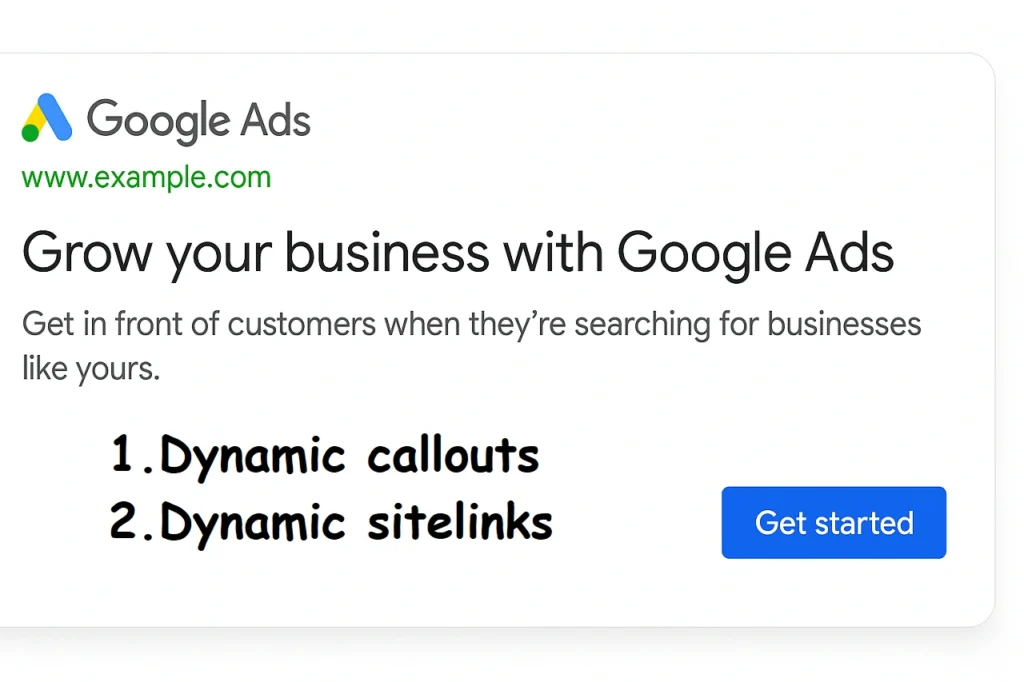In the world of digital advertising, automation is key. One question that often comes up is: which two asset types can also serve as account-level automated assets? The answer is simple: “Dynamic callouts and
Dynamic site links”. The answer lies in the evolving features of Google Ads. As Google continues to roll out smarter automation tools, marketers benefit from improved performance and simplified workflows.
Knowing which two asset types can also be served as account-level automated assets is essential for anyone managing multiple ad campaigns. It helps advertisers maintain consistency and drive better results with less manual effort.
What Are Account-Level Automated Assets?
Before diving into the asset types, let’s define account-level automated assets.
These are elements created and served by Google Ads across multiple campaigns or ad groups in your account. They are based on your site content, ads, and other signals. The goal? To improve relevance, quality, and click-through rates.
Google generates these automatically when it identifies an opportunity to boost performance. This means you don’t need to create them manually every time.
Which Two Asset Types Can Also Be Served as Account-Level Automated Assets?
The two asset types that can be served as account-level automated assets are:
- Dynamic callouts
- Dynamic sitelinks
1. Sitelink Assets
Sitelinks are one of the two main types that can serve as account-level automated assets. These are additional links that appear under your main ad headline. They help users navigate to specific pages on your site—like “Contact Us” or “About.”
Sitelinks at the account level provide consistent messaging across campaigns. You can serve them automatically without assigning them to every ad group or campaign.
Why Sitelinks Matter:
- They increase ad space on search results.
- They improve click-through rates by offering multiple entry points.
- They give users quick access to what they need.
Example: If you’re running ads for a retail store, Google might generate sitelinks like “Women’s Sale” or “Store Locator” using your website structure.
2. Callout Assets
The second type is callout assets. These short, descriptive texts appear with your ad to highlight unique features or offers. Think of phrases like “Free Shipping” or “24/7 Support.”
Callouts can also be automated at the account level. This means Google can serve them across various campaigns to keep your ads aligned with your core value propositions.
Why callouts are useful:
- They reinforce your brand strengths.
- They don’t require user interaction, unlike sitelinks.
- They offer added context and build trust.
Example: A SaaS company may have automated callouts like “No Credit Card Required” or “Free Trial Available” based on its landing pages.
Benefits of Using Account-Level Automated Assets
Using automated assets at the account level brings several advantages:
Saves Time
You don’t need to create assets manually for every campaign. Google detects what’s useful and deploys it automatically.
Boosts Performance
These assets are based on real-time data, which means they adapt to what’s working best.
Improves Relevance
Google pulls from your site and ads to ensure that sitelinks and callouts match the user’s intent.
Enables Scalability
As your campaigns grow, you won’t have to spend extra effort managing repetitive asset entries.
Best Practices for Using Account-Level Automated Assets
To get the most out of these assets, follow these tips:
1. Keep Website Content Updated
Google uses your site to generate relevant sitelinks and callouts. Make sure it reflects your current offerings.
2. Use Clear Page Titles and Meta Descriptions
This helps Google better understand what to pull for sitelinks.
3. Monitor Asset Performance
Use the “Assets” tab to track impressions and clicks.
4. Combine with Manual Assets
You can run both automated and manual assets. Use manual for precision, and automated for scalability.
5. Align with Campaign Goals
If your goal is lead generation, make sure your landing pages and callouts support that.
Conclusion
These automated features from Google Ads can enhance your campaign efficiency and consistency across your account. By leveraging them properly, you can save time, boost engagement, and scale your marketing efforts with ease. Stay updated on new automation features and continue testing to get the most out of your ad campaigns.
Feel free to Contact Us if you have any suggestions. Thanks!


